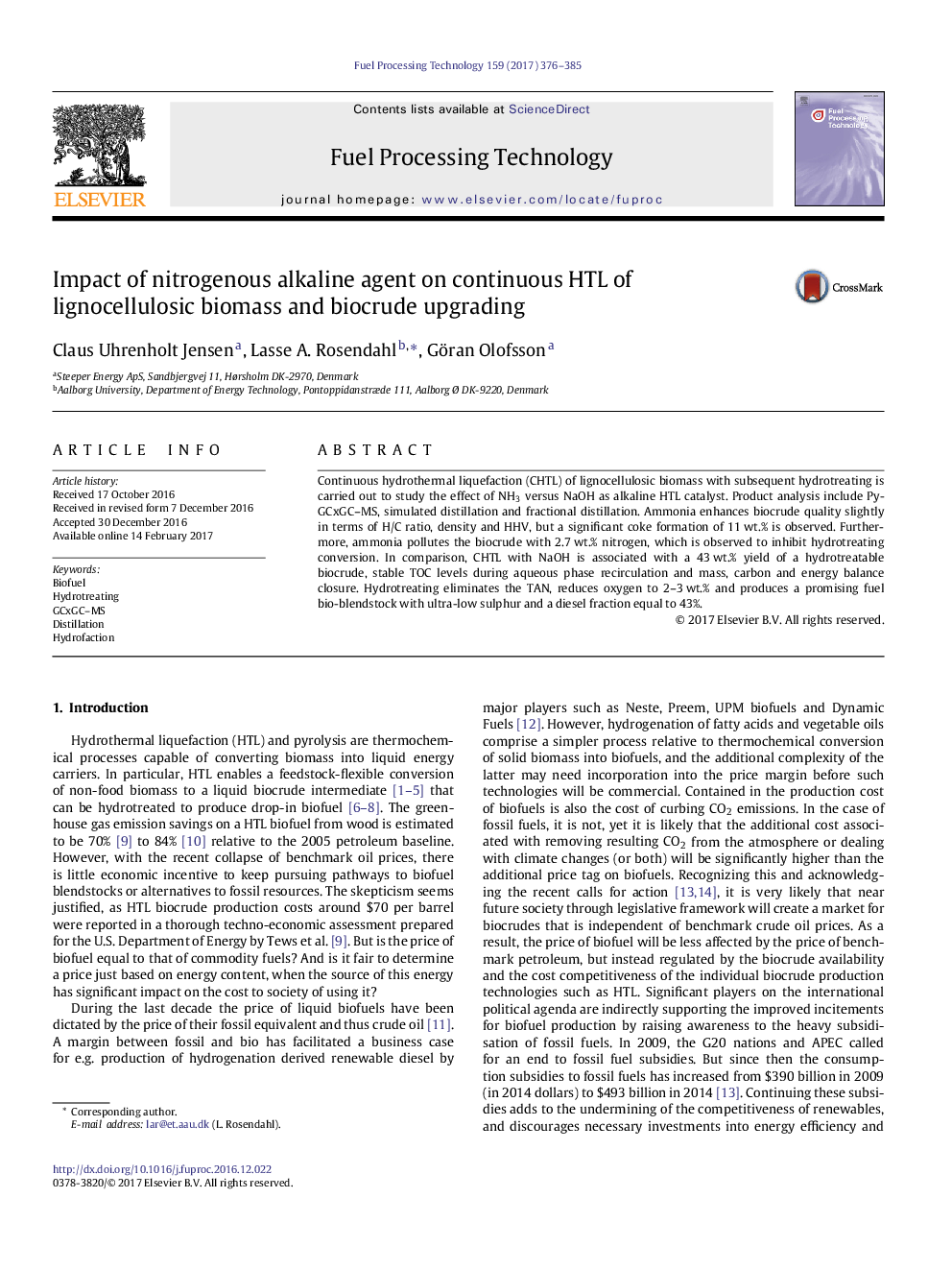| Article ID | Journal | Published Year | Pages | File Type |
|---|---|---|---|---|
| 4914377 | Fuel Processing Technology | 2017 | 10 Pages |
Abstract
Continuous hydrothermal liquefaction (CHTL) of lignocellulosic biomass with subsequent hydrotreating is carried out to study the effect of NH3 versus NaOH as alkaline HTL catalyst. Product analysis include Py-GCxGC-MS, simulated distillation and fractional distillation. Ammonia enhances biocrude quality slightly in terms of H/C ratio, density and HHV, but a significant coke formation of 11Â wt.% is observed. Furthermore, ammonia pollutes the biocrude with 2.7Â wt.% nitrogen, which is observed to inhibit hydrotreating conversion. In comparison, CHTL with NaOH is associated with a 43Â wt.% yield of a hydrotreatable biocrude, stable TOC levels during aqueous phase recirculation and mass, carbon and energy balance closure. Hydrotreating eliminates the TAN, reduces oxygen to 2-3Â wt.% and produces a promising fuel bio-blendstock with ultra-low sulphur and a diesel fraction equal to 43%.
Keywords
Related Topics
Physical Sciences and Engineering
Chemical Engineering
Chemical Engineering (General)
Authors
Claus Uhrenholt Jensen, Lasse A. Rosendahl, Göran Olofsson,
